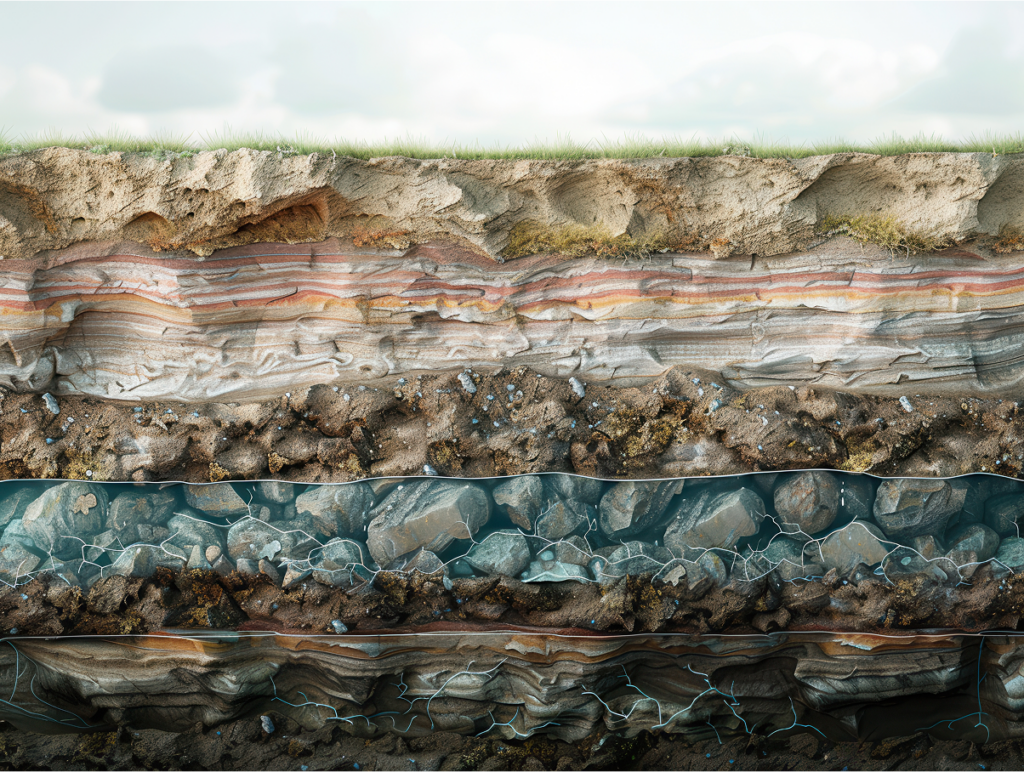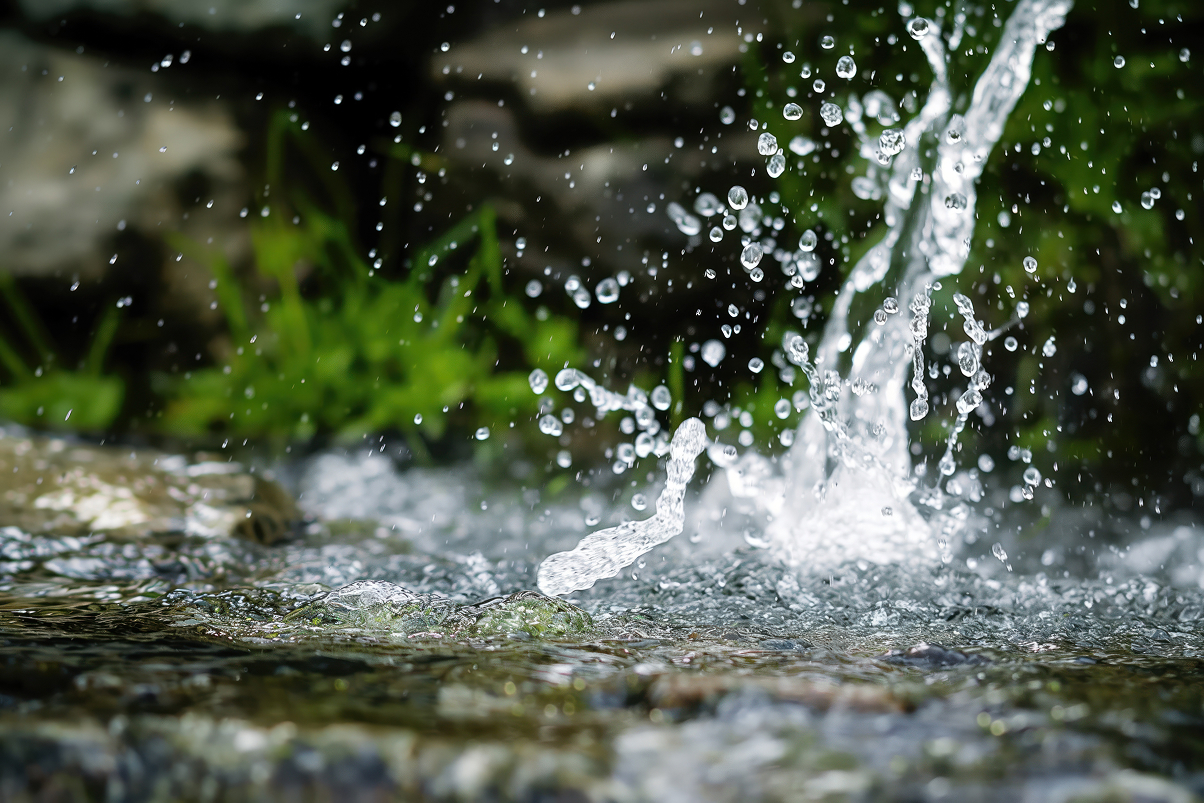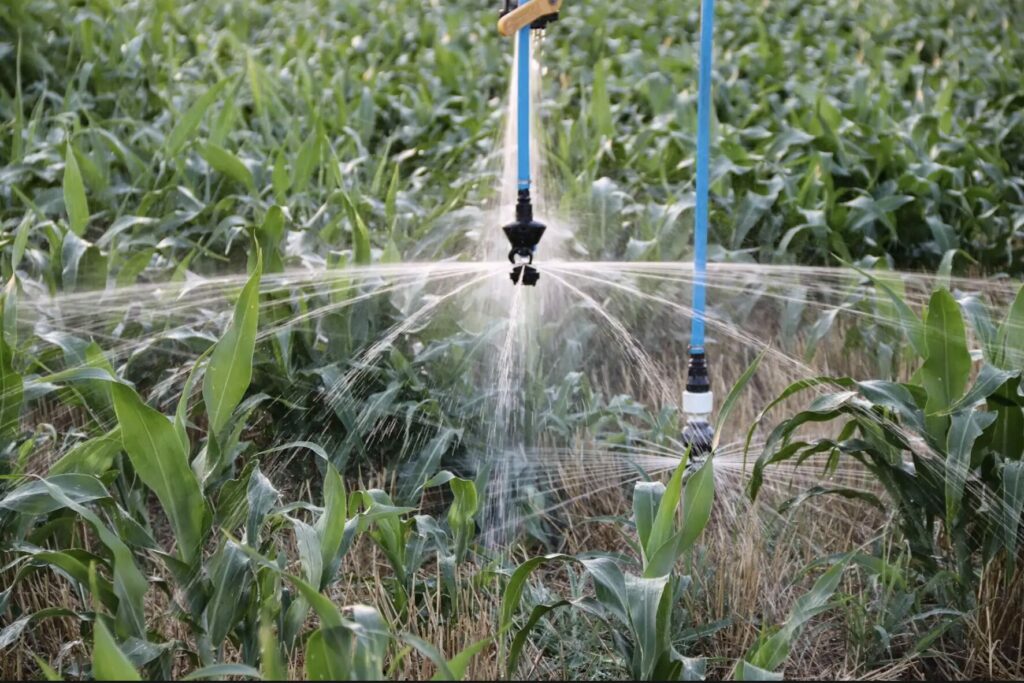Out of sight, out of mind — right? What if we told you that groundwater — water deep beneath the Earth’s surface — is more present in your life than you might think? In fact, nearly 60 percent of Texas’ water comes from underground sources. Chances are the water flowing from your tap could have been sourced from thousands of feet below ground. Sure, we can’t see it, but groundwater plays a vital role in our daily lives and should be top-of-mind for all Texans. Especially now, as a rapidly growing population, prolonged drought conditions and aging infrastructure are accelerating the depletion of groundwater supplies.
What is groundwater, anyway?

Before we can fully understand the challenges facing groundwater, it’s important to get a big-picture view of what groundwater is. That’s why we spoke with Jennifer McClendon, education coordinator for the High Plains Water District. She said there are two primary sources of freshwater: surface and groundwater. Many of us are familiar with surface water – lakes, rivers, ponds and reservoirs. Groundwater is located beneath the surface in what’s called aquifers.
“An aquifer is an underground source of water found in porous rock, sand, gravel, and other underground materials. So, to access that, wells are drilled to pump it from the ground,” she explained.

In addition to pumping, groundwater is also naturally discharged via springs.
Texas is home to 22 minor aquifers and nine major ones, including the Ogallala Aquifer, the largest aquifer in the country, which spans eight states in the Great Plains. McClendon noted that aquifers vary in their depth, the materials they are made of and whether they are confined or unconfined. These factors determine how easily water can be accessed and how quickly the aquifer can be replenished.
Aquifers are naturally recharged through precipitation, but McClendon explained that recharge can occur quickly or take many years to reach an aquifer. The Ogallala, for example, is the largest source of groundwater in Texas. It has an immense capacity, but it can take a long time to recharge.
“Conserving as much water as possible is important because, on average, our aquifer might only receive a half inch of recharge annually,” McClendon explained.
Why does groundwater matter?
You might be wondering: Why does Texas rely so heavily on groundwater? Many parts of the state lack access to surface water, and prolonged droughts only put more pressure on the already limited water supplies. That’s why groundwater is such a vital resource for Texans.

Groundwater provides water for everyday use in homes in rural communities across the state and even some larger municipalities like San Antonio. It’s also critical for businesses and industries, including manufacturing, mining, steam-electrical power, and the largest user, irrigation.
If you’re curious why irrigation is the largest user – that’s a good question! Groundwater used for irrigation is critical to growing the crops that provide a steady food supply and drive local economies. To help put its importance into perspective, we spoke with Bridget Guerrero, agricultural business and economics at West Texas A&M University. She explained that the Texas High Plains, the largest agricultural production area in the state, has a semi-arid climate that doesn’t receive much rainfall.
“If it doesn’t rain, have the ability to apply irrigation to their land to make up for what they might not receive in rainfall. It’s really brought a lot of opportunities to farmers to produce more and to reduce their risk,” she said.
Guerrero, Paul Engler Professor of Agriculture, added that irrigation can increase a farm’s output value by anywhere from $20-$250 per acre. When farmers thrive, it not only provides quality, locally-produced food, but it also generates economic activity and supports jobs throughout the state.
Agriculture is vital to the prosperity of the Texas High Plains. In fact, it’s estimated that without irrigated agriculture, the region’s economy could only support two-thirds of its population.
As a specialist in regional economics, Guerrero said the agriculture industry in the Texas High Plains generates around $8 billion in output to the economy. But the value doesn’t end there. She explained that regional economics looks at how $1 of output from one sector impacts other sectors in that economy – a concept she referred to as the multiplier effect.
“How does that $1 that’s produced affect everybody else? The restaurants, the grocery stores, the chemical suppliers, the travel agencies – every single other sector in the economy is affected by agriculture,” she emphasized. “So, that $1 would turn into $2 when you’re looking at the local economy, and a little more than $2 when you’re looking at the overall state economy.”
Looking at the bigger picture, Texas’ food and fiber sector as a whole generates a total economic impact of $150 billion annually. We have groundwater to thank for a large part of that.
Rising to the Challenge
There is no doubt that groundwater is essential to the growth of our food, supporting our economy and sustaining every Texan. But we are faced with a challenge.
“Everybody needs groundwater and it’s important how we balance the demand and understand the needs of each water user group,” McClendon explained. “We all are dealing with water issues and so we all have to pitch in and do our part.”
Conservation is key to preventing excessive depletion of groundwater and ensuring supplies for generations to come. The good news is that there are organizations like the Texas Water Development Board and groundwater conservation districts throughout the state working to secure Texas’ water future – but this effort requires all of us to do our part.
Farmers understand how important groundwater is – it’s their livelihood. That’s why they utilize a range of conservation practices and technologies to ensure irrigation water is used wisely.
“Producers in our area use low-pressure center pivots or subsurface drip irrigation methods. They have also invested a lot of money in telemetry equipment, soil moisture probes, and other scheduling tools to irrigate efficiently as possible,” McClendon said.
Just like farmers, the rest of us can make a difference, too. It can be as simple as turning off the water when you’re brushing your teeth. Or take control of your outdoor home water use with helpful tools like Water My Yard, which uses local weather data to help you water your yard more efficiently. Discover more ways to save here and reach out to your local water conservation district.
While we can’t see it, groundwater is essential to life in Texas. Whether you live on a farm or in an apartment in the city, every action—no matter how small— improves the state’s water future. Let’s rise to the challenge together!


